How to make a good forensic diagnosis? Some characteristics and recognition techniques (part I)
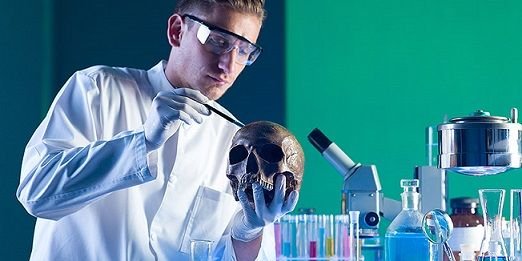
"Life" is the process that preserves the physical integrity of the body and "death" is the stopping of that process, the preservation of animal life depends on the functioning of the oxygen cycle, which comprises four organic levels:
- The vital centers in the medulla oblongata initiate respiratory movements.
- The lungs take oxygen from the inspired air, transfer it to the erythrocytes and at the same time receive the carbon dioxide and other waste from the plasma to be eliminated by the expired air.
- The blood carries the erythrocytes, which are responsible for transporting oxygen that reaches the lungs and cells throughout the body, after these cells are taken carbon dioxide and waste products.
- The heart and blood vessels drive and drive blood from the lungs to the tissues.
In other words, life depends on the functioning of circulation, respiration and the nervous system that maintain the oxygen cycle. Therefore, "real death" is what happens when the circulation, breathing and nervous system stop working. On the other hand, "apparent death" is a passing state in which these functions only appear paralyzed, and which is characterized by immobility and the apparent absence of circulation and breathing. Within the apparent death several ways have been distinguished:
- Toxic: Includes anesthesia.
- Apoplexy: By electrocution and comatose (Vargas, E et al., 1983).
The absence of electrical activity checked by electrocardiogram and electroencephalogram has been proposed as definitive proof of death.
What happens when we stop breathing?
When the oxygen stops circulating, the body has certain internal symptoms:
- The CNS (central nervous system) dies quickly leaving the body immobile and without signs of breathing.
- The heart stops beating therefore of pumping blood.
We can note that it is interesting that during the first hours of death the intestinal musculature can show active peristalsis which can generate gas or some intestinal activity, some spasms or movements of the skeletal muscles (orbicularis of the eyelids and lips) can also occur. , the heart could also contract very briefly and slightly, sometimes, in the male case the sperm continue to have activity in the male urethra for the next 24 hours.
Brain death and Respiratory death
Normally the diagnosis of "cardiorespiratory death" is reached by checking the total cessation of respiration, through the lack of oxygen, the next (brain death) is an irreversible cessation of the brain function checked by which respiration and circulation and breathing can be maintained artificially.
How to recognize death? What should I observe to make the definitive diagnosis?
The signs to recognize this state are three: nervous signs, circulatory signs and respiratory signs.
Nervous signs:
- Immobility, flaccidity and softness of the muscles, with loss of reflexes, paralysis of the sphincters. We can be sure by testing the ocular reflexes, with dilatation of the pupils.
Circulatory signs:
- In practice we proceed to check the absence of heartbeats for five minutes on each of the four foci of negative cardiac auscultation during twenty minutes is a sign of death. This is the "Bouchut sign".
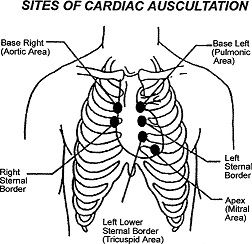
- Absence of inflammatory halo of burn. To do this apply a low tongue and other object heated in a flame and applied on one side of the thorax or on the soles of the feet, if the individual is dead there will be no inflammatory halo around the burn, sign of lancisi.
- The sign of Icard or fluorescein; consists of intravenous injection of a solution of fluorescein (5 grams in 50cc of distilled water), which is the most dye substance known, if there is circulation the skin and mucous membranes will turn yellow and the eyes will look like emerald green.
- The absence of the systolic pulse in the bloodstream, this can be verified by the section of a vein of the fold of the elbow, if blood will flow the pressure.

Respiratory signs:
- Absence of the nasal murmur, we can use a mirror or shiny surface, place it just under the nose and if there is still fogging there is breathing, this is the sign of winslow.

- Sign of pneumatoscopy or hydrogen sulphide, consists of determining the presence of hydrogen sulphide by the incipient putrefaction coming from the respiratory orifices. To verify this, lead acetate is used, which is colorless and, when it is bound with the hydrogen sulphide, it is transformed into lead sulphide, which is black, and for this we draw traces with the acetate on a paper.
Finally, for those who are interested in this art of forensic science, are the cadaverous aspects that are exposed after the death.
We will start with some of the early features:
Early Features: Cooling, dehydration, lividities, rigidity and cadaveric spasms (which I mentioned at the beginning).
- Cadaveric cooling: When dying our body stops producing heat and starts to adapt to the temperature of the environment, this tends to occur between fifteen and twenty hours or so. The cooling occurs first in the exposed parts (faces, hands and feet), then the chest and back, then the belly, neck and armpits, finally the abdominal viscera. Here a technique to calculate the time of death, there is the Bouchout formula, according to the temperature loss is made at a rate of 0.8 to 1ºC per hour (the first hours) and at a rate of 0.3 to 0.5ºC per hour (in the second twelve hours). The formula is applicable at temperatures between 5º and 15ºC. Another way to calculate the time of death is with the formula of Glaister for temperatures of degrees Fahrenheit:
They take the difference of the temperatures and divide them by the constant (1.50), the quotient of the result expresses approximately the number of hours of death.
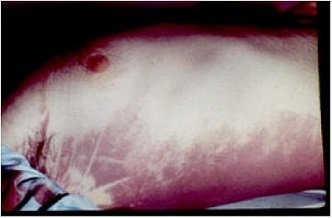
- Dehydration cadaveric: It is due to the loss of water by evaporation, in children can be present as a decrease in weight at the rate of eight grams per kg of daily weight. Mainly these evidences appear in the eyes and are the signs of stenos-louis and sommer.
- The first consists in: 1. Sinking of the eyeball, 2. Loss of transparency of the cornea that becomes opaque, 3. Formation of wrinkles in the cornea, 4. Deposit of dust that gives it a sandy appearance (in the open eye) appear at forty-five minutes and closed at twenty-four hours).The sommer: It consists of a black triangle at the base of the cornea on the outside of the eye, and then internal. This is due to the pigment of the choroids that remains visible when the sclera becomes transparent due to dehydration. This anomaly appears in the parts not covered by the eyelids, between three and five hours (Vargas, E. and Col. 1983) (Moya, V et al., 1994).Cadaveric lightnesses: Also known as livor mortis, are vinous red spots on the surface of the skin due to the accumulation of blood in the declining parts, in the viscera, constitute visceral hypostasis.
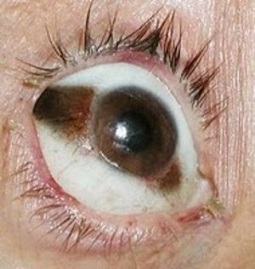
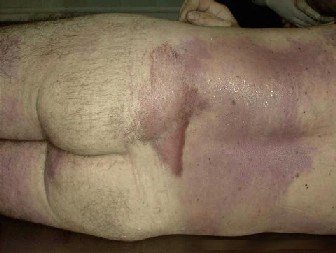 All these aspects of forensic medicine are applied to the recognition and determination of human death, we must also take into account that in the field of anthropology are taken into account other aspects for the resolution or investigation of criminal cases, for example, studies socio-economic aspects of the individual, its environmental environment, possible motives on the part of the main suspects for death, psychological profiles, the almost total recreation of the attack by means of wounds and the study of peri and post-mortem wounds in the bones, only a superficial study, for all this a multidisciplinary team is required that complements the requirements of the investigation.
All these aspects of forensic medicine are applied to the recognition and determination of human death, we must also take into account that in the field of anthropology are taken into account other aspects for the resolution or investigation of criminal cases, for example, studies socio-economic aspects of the individual, its environmental environment, possible motives on the part of the main suspects for death, psychological profiles, the almost total recreation of the attack by means of wounds and the study of peri and post-mortem wounds in the bones, only a superficial study, for all this a multidisciplinary team is required that complements the requirements of the investigation.
Fuente de las Imágenes: A B C D E F G H Bibliographic References: - Book: Curso de mejoramiento profesional/aspectos médico-forenses e investigación criminal/Ronald Mavarez, Juan C. Viloria, Israel Vargas, Alejandro Ávila, Danny Ávila/ octubre 2013/ Universidad del Zulia, Facultad Experimental de Ciencias, Asociación de Egresados de Ciencias, observatorio criminalístico.
Well guys and girls I say goodbye, if you liked this post be aware of the rest of the content. Thanks for reading and I hope you leave your comments to be in contact.
These are some interesting concepts I've never previousely come across, thanks for the read!
Congratulations @annyclf! You have received a personal award!
Click on the badge to view your Board of Honor.
Congratulations @annyclf! You received a personal award!
You can view your badges on your Steem Board and compare to others on the Steem Ranking
Vote for @Steemitboard as a witness to get one more award and increased upvotes!